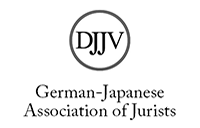The Jury System in Modern Japan: Revolution Failed?
Abstract
A jury system or lay assessor system came into effect in Japan in 2009. The government is expecting about 3,000 of the severest criminal cases to be judged by a mixed panel consisting of three judges and six citizens. However, the jury system is not new for Japan, which adopted a jury system in 1923 and recorded recurrent debates on the subject from the very beginning of the Meiji era. The enactment of the 1923 Jury Act was the result of a decade-long political process to fundamentally reform the nation’s judiciary. In April 1923, Hozumi Nobushige announced that the Jury Act was the final stage in the modernization of Japan. Hozumi also labeled the jury system “a revolution in Japan’s legislative history” which, so he argued, would “bring autonomy to the people in criminal matters.” In this paper, we will explain the political process leading to the promulgation of the 1923 Jury Act and address the socio-legal relevance of the jury system when it was operative (1928-1942). The theoretical implication of this paper is reflected in the central question whether the Jury Act fits the analytical models developed in the institutional tradition using concepts such as “path dependency” and “punctuated Equilibrium.”






